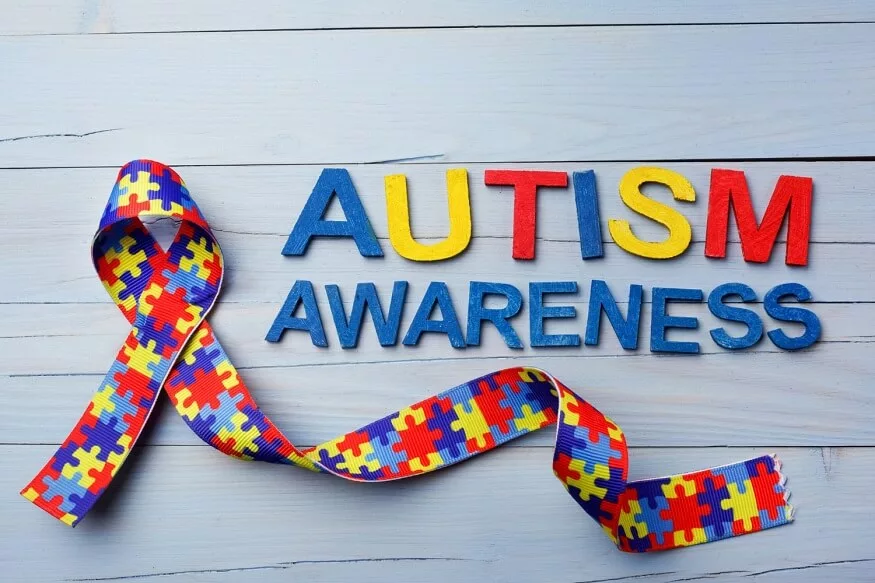For parents navigating the intricacies of raising a child with autism, understanding the nature of the disorder, its causes, and available therapies is crucial. This comprehensive guide aims to shed light on autism awareness and acceptance, offering insights into the disease, its origins, signs, and symptoms, therapy options, and guidance on how parents can foster acceptance.
What is Autism Spectrum Disorder?
Autism Spectrum Disorder is a complex neurodevelopmental disorder that impacts an individual’s social interactions, communication skills, and behaviour. It is characterised by a spectrum, meaning that the severity of symptoms and the range of abilities can vary widely among individuals. Autism is not a disease; rather, it is a diverse condition that manifests differently in each person.
Causes of Autism
Here, we explore the key factors that contribute to the development of autism:
- Genetic Factors: Genetic predisposition is a significant contributor to the development of autism. Research suggests that certain genetic mutations or variations may increase the likelihood of ASD. Studies have shown that individuals with a family history of autism have a higher risk of being diagnosed themselves. The heritability of autism is evident in studies of twins and families. Identical twins, who share 100% of their genetic material, are more likely to both be diagnosed with autism if one of them has the disorder compared to non-identical twins.
- Prenatal Factors: Events during pregnancy may contribute to the development of autism. Advanced parental age, exposure to certain medications, complications during pregnancy, and maternal health conditions are among the prenatal factors that have been studied.
- Neurological Factors: Abnormalities in brain structure and function are commonly observed in individuals with autism. These neurological differences can impact the way the brain processes information and handles sensory input.
Also Read: How To Support Children with Autism in The Classroom
Signs and Symptoms of Autism
Here are key signs and symptoms associated with autism:
Social Communication Difficulties
- Limited or Absent Social Interest: Individuals with autism may show reduced interest in others, including peers and family members. They might not initiate social interactions or respond to social cues.
- Difficulty with Non-Verbal Communication: Challenges in understanding and using non-verbal communication, such as gestures, facial expressions, and body language, are common. Lack of eye contact or unusual facial expressions may be observed.
Language and Communication Challenges
- Delayed Speech Development: Some individuals with autism may experience delays in spoken language development. Others may not develop spoken language at all, relying on alternative communication methods such as gestures, sign language, or communication devices.
- Echolalia: Repetitive echoing of words or phrases without demonstrating a clear understanding of their meaning is a common feature. This can be immediate or delayed echolalia.
Repetitive Behaviors and Restricted Interests
- Stereotyped or Repetitive Movements: Individuals with autism may engage in repetitive movements, such as hand-flapping, rocking, or spinning objects. These behaviors can serve as self-soothing mechanisms.
- Inflexible Adherence to Routines: A strong preference for routine and difficulty with changes in daily activities or surroundings are often observed. Disruption of routines can cause distress.
Difficulty with Social Relationships
- Challenges in Developing Peer Relationships: Difficulty in establishing and maintaining age-appropriate relationships with peers is a common social challenge. Individuals with autism may struggle with understanding social norms and cues.
- Lack of Empathy: Difficulty understanding or expressing empathy towards others is often observed. Challenges in perspective-taking and interpreting others’ emotions may contribute to social difficulties.
Communication Challenges
- Literal Understanding of Language: Individuals with autism may have a literal interpretation of language, leading to difficulties understanding metaphors, sarcasm, or implied meanings.
- Difficulty Initiating and Sustaining Conversations: Challenges in initiating conversations and maintaining reciprocal communication are common. Limited use of gestures and reduced sharing of interests with others may be evident.
Intellectual and Learning Differences
- Varied Intellectual Abilities: The intellectual abilities of individuals with autism can vary widely, from intellectual disability to average or above-average intelligence.
- Specific Learning Challenges: Difficulties in certain academic areas, such as math or reading, may be present. However, some individuals with autism excel in specific areas of interest.
Also Read: These Award-Winning Films About Kids with Special Needs Will Warm Your Heart
Therapy for Autism
While there is no cure for autism, various therapies and approaches aim to enhance communication skills, social interactions, and overall quality of life. Here are some therapies
- Behavioural Therapies: Applied Behaviour Analysis (ABA) is a widely used behavioural therapy that focuses on reinforcing desired behaviours and reducing problematic ones. It involves breaking down complex skills into smaller tasks and using positive reinforcement to encourage desired behaviours.
- Communication and Speech Therapies: Speech and language therapy helps individuals with autism develop effective communication skills. This may include improving speech articulation, using alternative communication methods such as sign language or communication devices, and enhancing social communication.
- Occupational Therapy: Occupational therapy addresses challenges related to fine and gross motor skills, sensory sensitivities, and daily living activities. It aims to improve an individual’s independence and ability to engage in daily tasks.
- Social Skills Training: Social skills training focuses on enhancing social interactions, teaching individuals with autism how to navigate social cues, make friends, and develop meaningful relationships.
- Parental Involvement and Support: Parents play a pivotal role in the therapeutic journey of a child with autism. Involvement in therapy sessions, consistent reinforcement of learned skills at home, and active collaboration with therapists contribute to the overall success of interventions.
Also Read: Speech Disorders In Kids: Causes, Symptoms, And Treatment
Parent’s Role In Supporting Autism
Acceptance is a crucial component of supporting a child with autism. Here are key ways parents can support and accept their child with autism:
- Educate Yourself: Knowledge is empowering. Learn about autism, its characteristics, and the various therapeutic approaches. Understanding your child’s unique strengths and challenges enables more effective support and advocacy.
- Build a Support Network: Connect with other parents, support groups, and advocacy organisations focused on autism. Sharing experiences, advice, and resources with those who understand the journey can provide invaluable support.
- Celebrate Individual Achievements: Recognise and celebrate your child’s achievements, no matter how small. Every step forward is a significant milestone in the journey of a child with autism.
- Encourage Independence: Foster independence by encouraging your child to explore their interests and develop skills that align with their strengths. Tailor expectations to your child’s abilities, promoting a sense of accomplishment and self-worth.
- Advocate for Inclusion: Advocate for inclusive environments in schools, communities, and social settings. Inclusion promotes understanding, empathy, and acceptance, contributing to a more inclusive society.
- Embrace Neurodiversity: Recognise and embrace the concept of neurodiversity, which acknowledges and values neurological differences. Viewing autism as a natural variation of the human experience promotes acceptance and reduces stigma.
For more such informative articles, refer to EuroSchool blogs.










